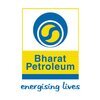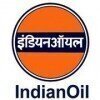Filter interviews by
Saudi Aramco Senior Quality Inspector Interview Questions and Answers
Saudi Aramco Senior Quality Inspector Interview Experiences
1 interview found
I applied via Recruitment Consulltant and was interviewed before Oct 2022. There were 3 interview rounds.

(2 Questions)
- Q1. About HV assets, Testing, maintenance
- Q2. Testing, Commissioning,
Training HV equipment’s
Top trending discussions






Interview questions from similar companies

I applied via Recruitment Consultant and was interviewed in Dec 2020. There were 6 interview rounds.
Interview Questionnaire
2 Questions
- Q1. 1st round is technical , 2nd is values & behaviors , 3rd is assessment road
- Q2. Be clear on values & behaviours , practice assement round offline before attempting
Interview Preparation Tips

I applied via Naukri.com and was interviewed in Oct 2020. There were 3 interview rounds.
Interview Questionnaire
1 Question
- Q1. The HR round was very pathetic. Sreethala took my HR round.
Interview Preparation Tips
Mumbai location. They will take all the interview rounds. The HR will ask you to submit all documents and last moment they will cancel your candidature without giving you any specific reason.

I applied via Company Website and was interviewed in Nov 2021. There were 4 interview rounds.
Interview Questionnaire
2 Questions
- Q1. About work experience and responsibilities
- Q2. Why you are leaving to present job
Interview Preparation Tips

Senior Engineer Interview Questions & Answers
Indian Oil Corporationposted on 18 Oct 2023
I applied via Newspaper Ad and was interviewed before Oct 2022. There were 3 interview rounds.

(1 Question)
- Q1. I was asked to make a presentation on laser technology.
Knowledge of the English language, its vocabulary and comprehension. Ability to solve basic mathematical problem, which shows the capacity to use an analytical approach to everyday puzzles.
Interview Preparation Tips

I applied via Recruitment Consulltant and was interviewed before Nov 2022. There were 2 interview rounds.

(5 Questions)
- Q1. Transformer testing
- Q2. Transformer protection
- Q3. SAP Maintenance module
- Q4. Spare maintenance philosophy
- Ans.
Spare maintenance philosophy focuses on maintaining spare parts to minimize downtime and ensure efficient operations.
Spare maintenance philosophy aims to have a sufficient inventory of spare parts to quickly replace any faulty components.
It involves regular inspections and maintenance of spare parts to ensure their functionality and readiness.
The philosophy emphasizes proactive planning and forecasting to anticipate th...
- Q5. Planning strategy
Interview Preparation Tips
- Maintenance straight
- SAP

I applied via Company Website and was interviewed before Aug 2023. There was 1 interview round.
(3 Questions)
- Q1. Explain the well integrity and well barrier elements.
- Ans.
Well integrity and well barrier elements are crucial components in ensuring the safety and efficiency of oil and gas wells.
Well integrity refers to the ability of a well to contain fluids within the intended zones and prevent any leaks or failures.
Well barrier elements are physical or mechanical barriers that are put in place to prevent the escape of fluids from the wellbore.
Examples of well barrier elements include ca...
- Q2. Explain the processes involved in Upstream.
- Ans.
Upstream processes involve exploration, drilling, and production of oil and gas.
Exploration: Involves searching for potential oil and gas reserves using seismic surveys and other techniques.
Drilling: Once a potential reserve is identified, wells are drilled to extract the oil and gas.
Production: Oil and gas are extracted from the wells and processed for distribution.
Examples: Offshore drilling in the Gulf of Mexico, sh
- Q3. Did you have any conflict with your supervisor of any others?
- Ans.
No conflicts with supervisor or others.
I have not had any conflicts with my supervisor or colleagues.
I believe in open communication and resolving issues professionally.
I prioritize teamwork and collaboration to prevent conflicts from arising.
Interview Preparation Tips

I applied via Company Website and was interviewed in May 2024. There were 2 interview rounds.
Behavioral questions and resume delve
Pmi - product management information
Interview Preparation Tips

I applied via Recruitment Consulltant and was interviewed in Dec 2024. There was 1 interview round.
(2 Questions)
- Q1. About project in depth
- Q2. What are some technical questions related to your job description?

I applied via Naukri.com and was interviewed before May 2023. There was 1 interview round.
(3 Questions)
- Q1. Mark VIe related questions were asked
- Q2. What specific is related to the terminal board
- Ans.
Terminal board is a device used to connect multiple wires or cables in an organized manner.
Used for connecting multiple wires or cables
Helps in organizing the connections
Commonly used in electrical and electronic systems
- Q3. Barcode are specific to each terminal boards
Interview Preparation Tips
Saudi Aramco Interview FAQs
Tell us how to improve this page.
Saudi Aramco Interviews By Designations
- Saudi Aramco Safety Officer Interview Questions
- Saudi Aramco Project Manager Interview Questions
- Saudi Aramco Engineer Interview Questions
- Saudi Aramco Senior Electrical Engineer Interview Questions
- Saudi Aramco Quality Engineer Interview Questions
- Saudi Aramco Welder Interview Questions
- Saudi Aramco Sales Trainer Interview Questions
- Saudi Aramco Warehouse Incharge Interview Questions
- Show more
Interview Questions for Popular Designations
- Quality Inspector Interview Questions
- QC Inspector Interview Questions
- QA QC Inspector Interview Questions
- Quality Control Inspector Interview Questions
- Quality Line Inspector Interview Questions
- Inspection Engineer Interview Questions
- Quality Assurance Inspector Interview Questions
- Third Party Inspector Interview Questions
- Show more
Saudi Aramco Senior Quality Inspector Interview Process
based on 1 interview
Interview experience
Interview Questions from Similar Companies
Saudi Aramco Senior Quality Inspector Reviews and Ratings
based on 2 reviews
Rating in categories
|
Project Engineer
23
salaries
| ₹24.5 L/yr - ₹52.2 L/yr |
|
Mechanical Engineer
14
salaries
| ₹4.9 L/yr - ₹19.2 L/yr |
|
Maintenance Planner
13
salaries
| ₹15.1 L/yr - ₹43.7 L/yr |
|
Safety Engineer
11
salaries
| ₹2.5 L/yr - ₹13.2 L/yr |
|
Safety Officer
11
salaries
| ₹4 L/yr - ₹12 L/yr |

Reliance Industries

Indian Oil Corporation

Shell

Bharat Petroleum
- Home >
- Interviews >
- Saudi Aramco Interview Questions >
- Saudi Aramco Senior Quality Inspector Interview Questions











